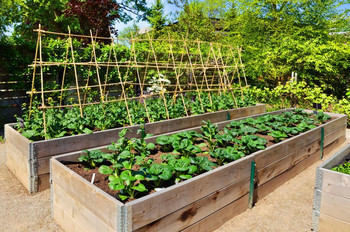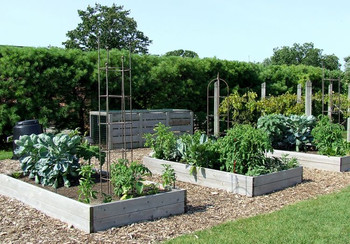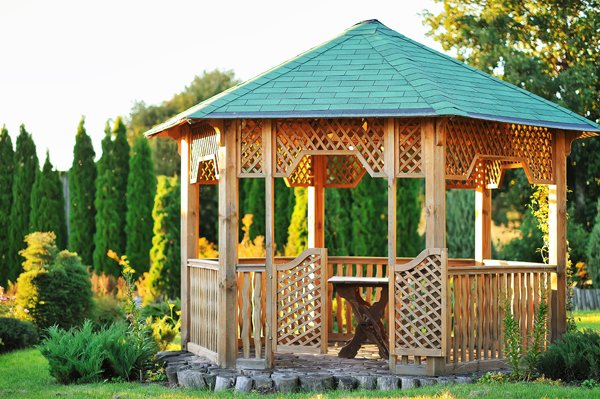 The vegetable patch is both a farming method and a growing medium. Slightly raised and composed of several small boxes in which vegetables, flowers and herbs are planted, the vegetable patch was born from a reflection on the traditional method of the vegetable garden in line. Offering many advantages, the vegetable bed must however be filled judiciously to be productive. A rich substrate will allow all your vegetables to grow and prosper, as well as good associations! Drop on the Gartendek.fr website to find out how these square and rectangular garden beds look like. The vegetable patch is both a farming method and a growing medium. Slightly raised and composed of several small boxes in which vegetables, flowers and herbs are planted, the vegetable patch was born from a reflection on the traditional method of the vegetable garden in line. Offering many advantages, the vegetable bed must however be filled judiciously to be productive. A rich substrate will allow all your vegetables to grow and prosper, as well as good associations! Drop on the Gartendek.fr website to find out how these square and rectangular garden beds look like.
History of the vegetable patch
This gardening method was invented in the USA by Mel Bartholomew, a former engineer who, wishing to start gardening, did not want to follow traditional methods. He wondered about the need for an individual to grow dozens of vegetable plants of the same species with the row crop method.
The vegetable patch as he defines it allows the creation of a vegetable garden even without having a lot of space and producing small quantities of vegetables at a time. The method is based on a fairly classic container culture, but this container is divided into small modules, allowing dense plantings. Mr. Bartholomew's method recommends a square of 1.20 m side, divided into 16 small squares of 30 cm side.
Since then, this method has been acclaimed, transformed, adapted by many gardeners.

An advantageous method
- The vegetable plot makes it possible to install a vegetable garden anywhere, even in a small space, and does not require having a surface of good soil. You can indeed install and fill a vegetable patch on a balcony or a terrace, in a patio or a courtyard, on poor soil (very poor soil, backfill, etc.).
- Gardening in a vegetable patch saves space. Indeed, crops are planted there more densely than in a vegetable bed. In a garden, laying these 1.20 m squares can be a waste of space because there are multiple paths, but it is enough to make long rectangles to limit the number of intermediate paths.
- As the volume of soil is limited, this method saves water (mulching is compulsory, which limits evaporation). And even if it tends to dry quite quickly, especially on the sides, it is simple to provide a drip irrigation system or microporous hose before filling.
- The substrate thus circumscribed heats up more quickly in the spring, allowing earlier planting.
- Thanks to the elevation of the substrate, it allows water to drain more easily during heavy rains, avoiding losses. Vegetables, like many other plants, do not like excess water.
- The reduced surface area saves effort: less area to weed, hoe... The substrate remains free of compaction, making it easier to remove unwanted weeds. These are less numerous thanks to the density of the plantations and the thick mulching put in place.
- The vegetables are healthier there: one of the principles of the vegetable patch is to associate crops with each other, which allows a mixture of vegetable, aromatic and even flower species. Pests are therefore less attracted to their usual hosts, have less facility to move from one to another, as do fungi and other diseases.
- The grid layout allows fine management of the planning and rotation of plants in the vegetable patch.
- The basic vegetable plots are certainly close to the ground, but their elevation of 20 or 30 cm already represents a significant improvement in comfort during tillage, care or harvesting. The shape and method are quite playful, ideal for beginners, for kids.
- The vegetable plot is very aesthetic, it can therefore be installed as close as possible to the house, which facilitates its maintenance.
Також читайте:
|











